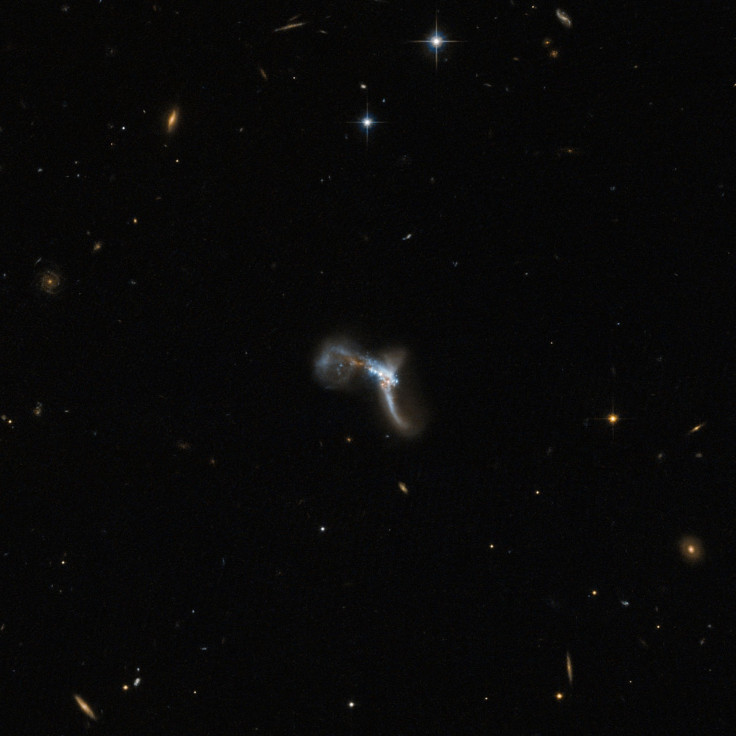Hubble Captures Twisting South America Galaxy In Latest Image [PHOTO]
Hubble’s latest image of IRAS 22491-1808, or the South America Galaxy, reveals a galaxy in the midst of change. The South America Galaxy is changing as a result of two galaxies colliding and merging into a new galaxy.

According to NASA, the South America Galaxy is classified as an ultra-luminous infrared galaxy. The galaxies give off the majority of their light at infrared wavelengths and are incredibly bright star systems. They can be 100 to 1,000 brighter in the infrared wavelength than galaxies like the Milky Way. These types of galaxies fall in the middle in terms of infrared wavelength brightness, with luminous infrared galaxies falling below ultra-luminous infrared galaxies, while hyper-luminous infrared galaxies are brighter than the latter.
The South America Galaxy is among the brighter ultra-luminous infrared galaxy, notes NASA. They also feature a high level of star formation activity.
For the South America Galaxy, first observed in 1990, the high level of star formation activity is the result of two galaxies colliding. At the center of the galaxy are two active nuclei and, NASA notes, the merging of the two galaxies is at the halfway point. The bright dots in the middle of the image are highly active star-forming clusters. Because of their brightness, the star clusters obscure the two nuclei. Using infrared imaging, astronomers were able to observe the two nuclei in 1998.
Another unique feature of the South America Galaxy is located at the tails of the galaxy. NASA points out evidence of a collision between the two galaxies can be seen in the distinct tails, at one end featuring two lines stretching outward and the other a circular pattern of stars.
© Copyright IBTimes 2024. All rights reserved.






















